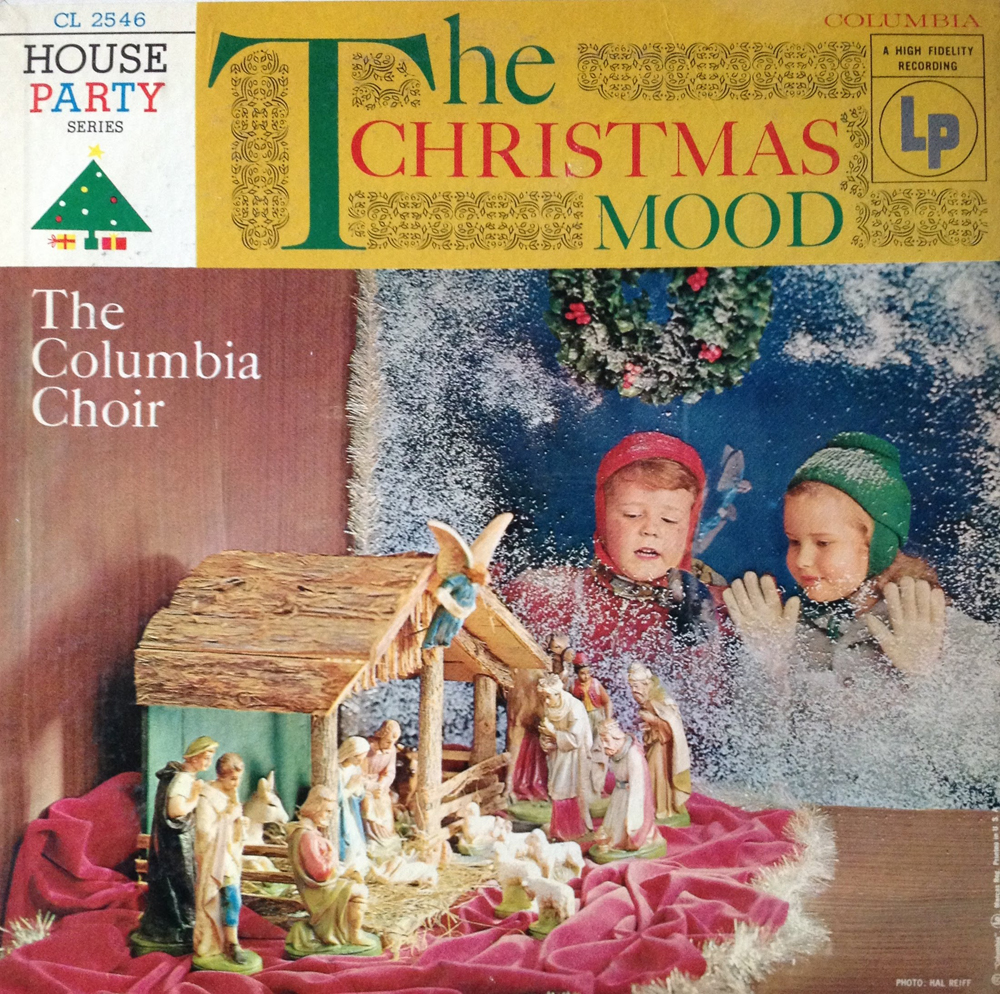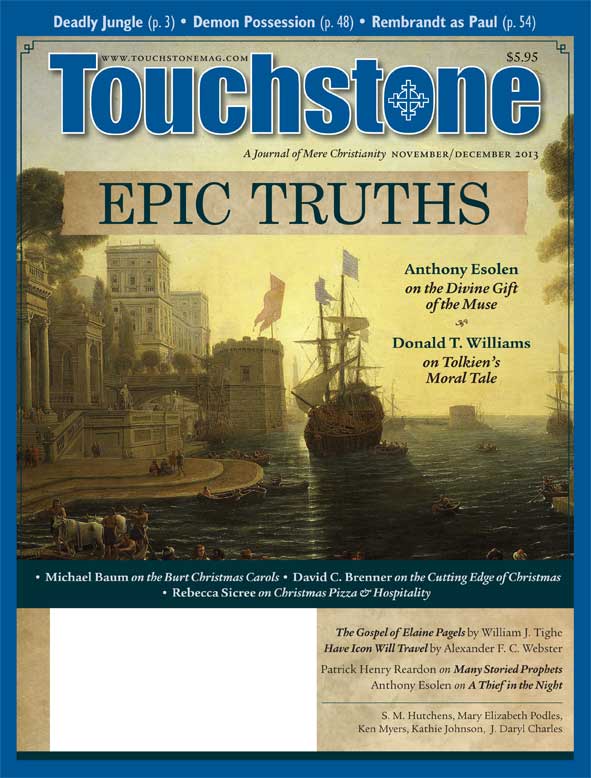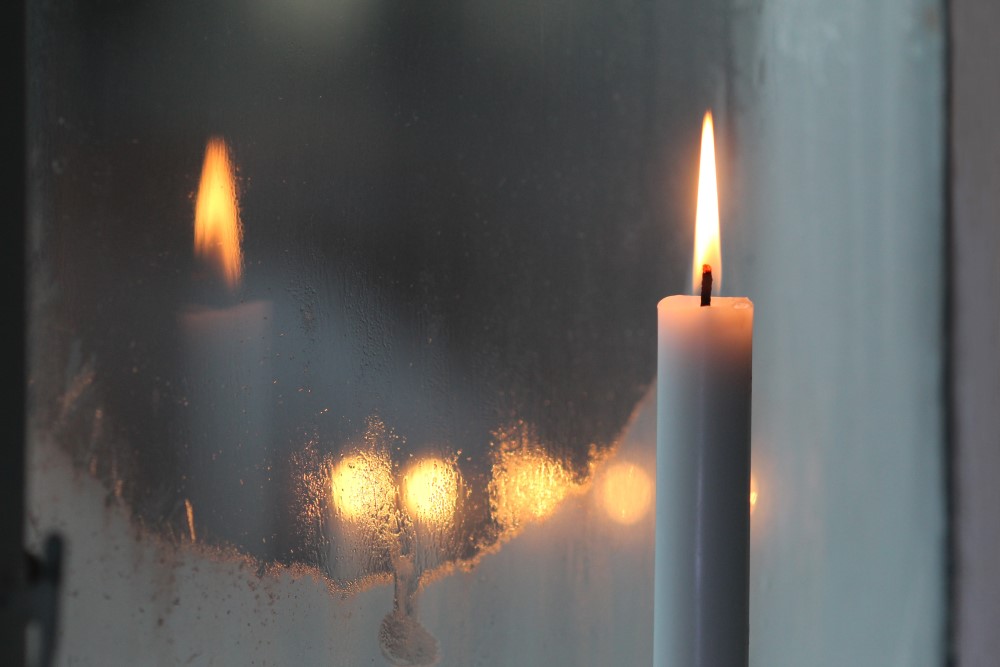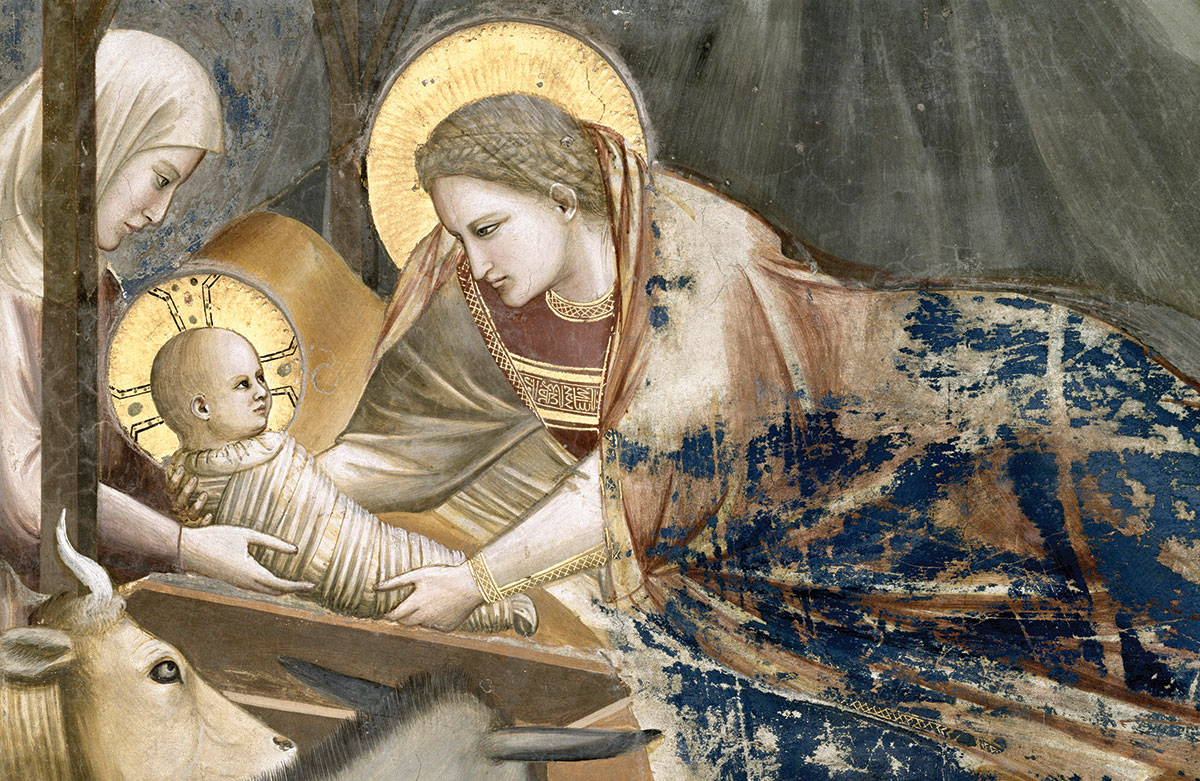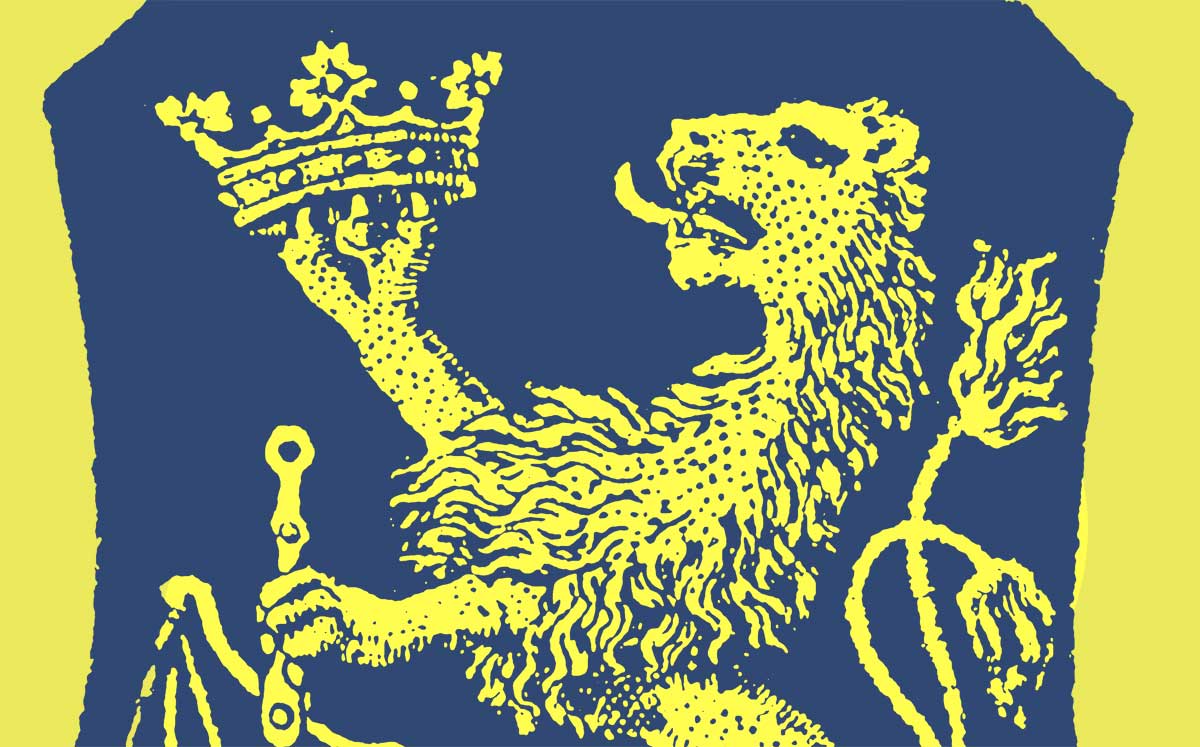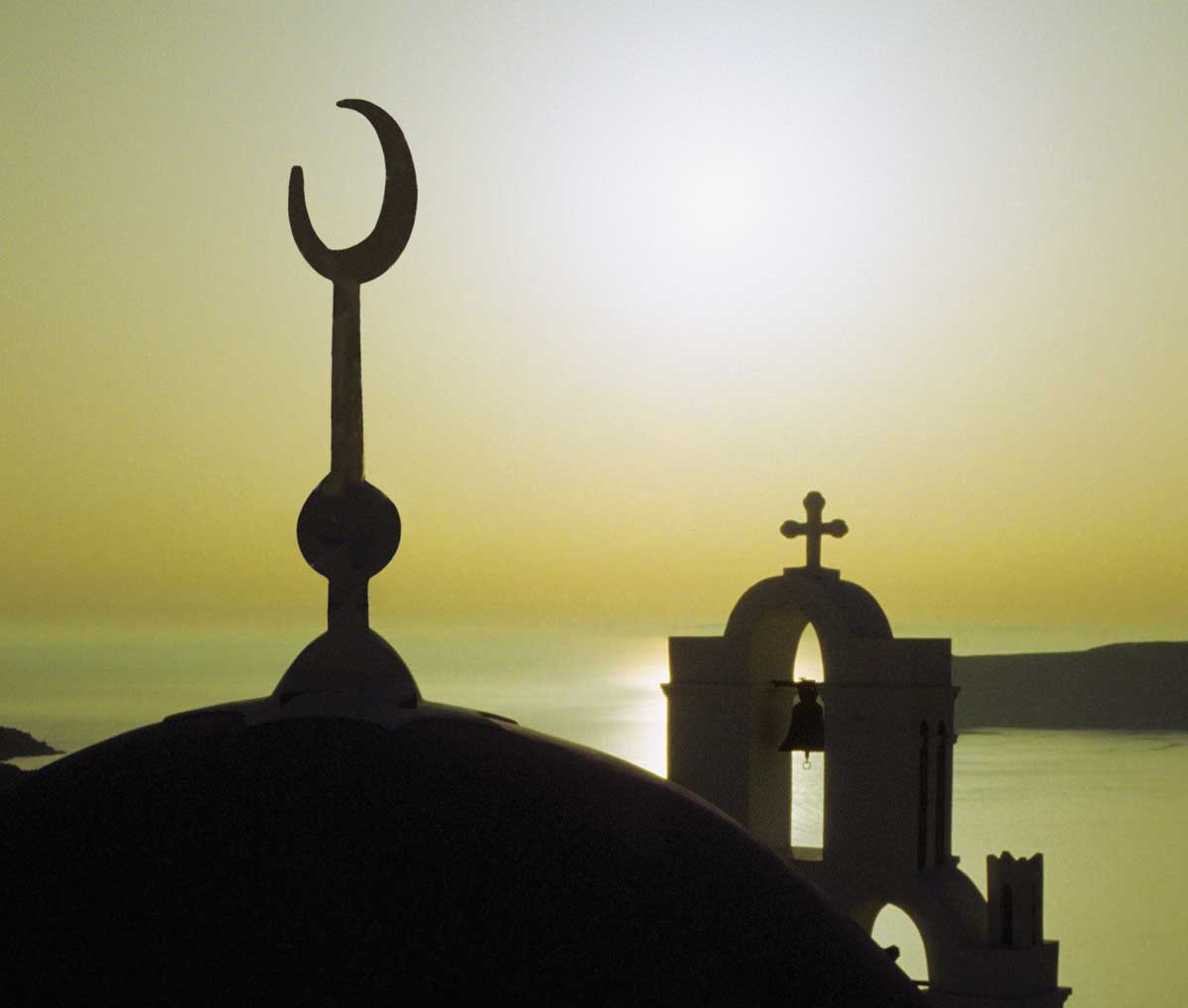View
The Burt Carols
Michael Baum on the Musical Gifts of a Jazz Musician's Christmas Cards
Popular Christmas carols are overwhelmingly secular and commercial. On ASCAP's list of the 25 most-recorded Christmas songs, only one, "The Little Drummer Boy," refers even obliquely to the birth of Jesus, as opposed to Santa, snow, snowmen, reindeer, chestnuts, and of course, Christmas presents.
But one corpus of contemporary Christmas songs counters that trend: the Alfred Burt carols. Though written by a jazz musician who spent most of his professional life in Hollywood, they are unabashedly Christian. Though musically sophisticated, they are highly personal, and most were written without thought of exposure beyond family and friends.
Since their publication in 1954, shortly after the composer's death at age 33, the fifteen "Burt carols" have been recorded by artists from Bing Crosby and Nat "King" Cole to Simon & Garfunkel and Mannheim Steamroller. They frequently appear on Christmas programs at Evangelical Protestant churches, yet they seem largely unknown by Anglican, Roman Catholic, and Orthodox Christians. This is odd because Burt, the son of an Episcopalian minister and brother of an Episcopalian bishop, was a lifelong Episcopalian himself, and traditional Christian belief permeates the carols.
A Blend of Modern & Traditional
The story of how the Burt carols joined popular culture is somewhat reminiscent of how "Silent Night" grew from a casual composition at a rural German church to an international standard. The Burt carols originally went out into the world one at a time in the family's Christmas cards. This "carol as card" tradition was begun by Rev. Bates G. Burt in 1922, upon his assignment as pastor of an Episcopal parish in Michigan. For 20 years, Rev. Burt wrote words and music himself and mailed each annual song to his parishioners and friends. His carols, some of which were published in 1990, are well written but conventional and would not look out of place in an Anglican hymnal.
Things changed when son Alfred came home from the University of Michigan with his new music degree. Rev. Burt handed him "Christmas Cometh Caroling," a poem by an Anglican monastic, and Alfred quickly composed a simple, pensive melody whose rhythms and harmonies incorporate the techniques of mainstream modern composition while retaining respect for the sense and sensibilities of the lyrics. Each stanza closes with a two-bar chromatic run that resolves to A major on the words "Lady Mary." This blend of modern and traditional persisted throughout Alfred's carols.
The Burt carols continued as a father/son collaboration until Rev. Burt's death in 1948, whereupon the lyric-writing responsibility shifted to the Michigan church organist, Wihla Hutson. By then, Alfred and his wife Anne had moved to California, where he kept so busy as a jazz trumpeter and composer that Anne often had to gently remind him when Christmas was coming and that he'd have to find at least a few minutes to generate that year's carol—for which, by that time, several hundred people on their card list would be waiting.
From Private to Public Success
Anne managed the mailing list and production, and occasionally conferred with Wihla on subject matter. A conversation about Anne's pregnancy produced two carols: "Sleep Baby Mine," a lullaby from the viewpoint of the Virgin Mary, and "Some Children See Him." The latter provides another example of positive tension between lyrics and music. The words are a sentimental reflection on how children around the world picture Jesus:
The children in each different place
Will see the Baby Jesus' face
Like theirs, but bright with heavenly grace
And filled with holy light.
The music delivers this rather conventional theme in the unconventional rhythmic meter of 5/4. Despite his jazz milieu, Burt resisted any temptation to emphasize the inherent syncopation of 5/4 (as exemplified by the Paul Desmond hit "Take Five" of the same era) and instead used the uneven meter to carry the short phrases of the poem across the bar lines for a smoothly flowing, rather wistful reflection on the unifying power of the love of God.
If there were performances of the carols during this time, they were private affairs. Not till 1952 did a Hollywood vocal group with which Burt was working happen to hear one of the carols and ask to perform it at a prominent show-business Christmas party. That caught the attention of Columbia Records and led to a recording contract that ironically was signed just before the young musician succumbed to lung cancer about a year later. He finished writing his last carol the day before he died. After that, the carols became an "overnight success"—if that phrase can be applied to works that traced their beginnings to the 1920s.
Christian Messages Conveyed
I stumbled upon the Burt carols as a young unbeliever in Chicago, wandering around a Moody Bookstore looking for Christmas items to enliven my rather Spartan bachelor apartment. The LP had a quirky cover that intrigued me enough to buy it and take it home to my stereo. On first hearing I was hooked. As a singer myself, I could appreciate the intricate, contemporary, but very singable harmonies, and the warmth and freshness of the melodies reawakened my Christmas spirit, seriously dented by the commercial holiday rush. Titles like "All on a Christmas Morning," "Caroling, Caroling," and "Nigh Bethlehem" conveyed an "old-fashioned Christmas" theme that went down easily. Only later, as I became involved in a church (including singing the Burt canon in a choir concert), did I better appreciate the Christian message the carols conveyed.
Sometimes the message seemed smuggled in. After two verses about trimming the tree and setting the table, "We'll Dress the House" smoothly segues the theme of decoration into:
And ye who would the Christ Child greet
Your heart also adorn,
That it may be a dwelling meet
For Him who now is born.
Let all unlovely things give place
To souls bedecked with heavenly grace,
That ye may view His holy face,
With joy on Christmas morn.
Sometimes the message is much blunter. Alfred set an "English hospitality rune" contributed by his elder brother to perhaps the most angular and nearly dissonant musical writing in the canon:
I met a stranger yest're'en;
I put food in the eating place,
Drink in the drinking place,
Music in the listening place,
And in the name of the Triune,
He blessed myself and my house,
My cattle and my loved ones,
And the lark sang in his song.
Often goes the Christ in the stranger's guise.
The Trinity, bodily manifestations of Christ, the Virgin Birth, redemption—heady themes for songs popularized by the likes of Fred Waring and Tennessee Ernie Ford. I would not go nearly so far as to say that the Burt carols made me a Christian, but I am quite sure they were among the tools the Holy Spirit used to carve out the path to my baptism as an Evangelical and, many years later, to my chrismation into the Orthodox Church.
From Night to Hope
Nearly 60 years after Alfred Burt's death, his carols still convey a message that faith does not preclude the modern, and that dark days do not negate God's presence. In the depths of World War II, Rev. Burt sent words of anguish and uplift to his son, who, from his army base in Texas, sent back a simple melody that moves from minor tonalities to major, much as the lyrics move from "night" to "hope." Their message is worth remembering in today's troubled time:
What are the signs of the morning,
God who created the light?
Speak through the gloom that enfolds us,
When breaks the dawn on our sight?
When comes the end of our night?
These be the tokens of promise,
One is a bright star above,
One a poor child in a manger,
Symbols of faith and of love,
Hope comes with faith, and with love.
Michael Baum is a management consultant, former English teacher, and writer with degrees in English literature and education from Yale University and an MBA from Northwestern. He and his wife live near Madison, Wisconsin, where they attend St. Ignatius Antiochian Orthodox Church. Their three adult children and five grandchildren attend Orthodox churches in Illinois, Wisconsin, and Indiana.
subscription options
Order
Print/Online Subscription

Get six issues (one year) of Touchstone PLUS full online access including pdf downloads for only $39.95. That's only $3.34 per month!
Order
Online Only
Subscription

Get a one-year full-access subscription to the Touchstone online archives for only $19.95. That's only $1.66 per month!
bulk subscriptions
Order Touchstone subscriptions in bulk and save $10 per sub! Each subscription includes 6 issues of Touchstone plus full online access to touchstonemag.com—including archives, videos, and pdf downloads of recent issues for only $29.95 each! Great for churches or study groups.
Transactions will be processed on a secure server.
more on Christmas from the online archives
more from the online archives
calling all readers
Please Donate
"There are magazines worth reading but few worth saving . . . Touchstone is just such a magazine."
—Alice von Hildebrand
"Here we do not concede one square millimeter of territory to falsehood, folly, contemporary sentimentality, or fashion. We speak the truth, and let God be our judge. . . . Touchstone is the one committedly Christian conservative journal."
—Anthony Esolen, Touchstone senior editor





